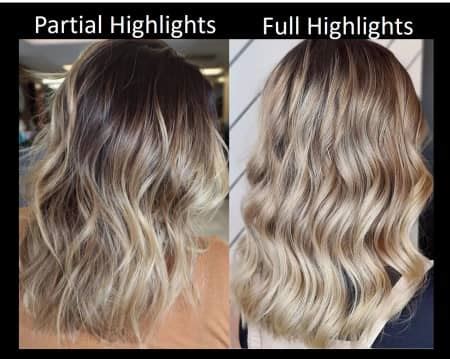Do you long for luscious locks in a captivating new hue, but hesitate to take the plunge from your deep, dark mane? Fear not! Our comprehensive guide empowers you with the knowledge and techniques to achieve the hair color of your dreams, seamlessly transitioning from black to vibrant shades.

The Journey from Black to Radiance: A Colorful Spectrum
Unlocking a world of possibilities, hair color from black offers a vast spectrum of alluring options:
1. Deep Brunette
Retain the sultry essence of black while adding subtle warmth with deep brunette shades. Rich mahogany and chocolate tones infuse your hair with an enigmatic glow.
2. Honey Blonde
Embrace the sun-kissed allure of honey blonde. Warm and radiant, this shade subtly brightens your locks, adding a touch of playful elegance.
3. Auburn
Ignite your fiery spirit with auburn’s fiery hues. From warm copper to deep burgundy, this shade exudes confidence and sophistication.
4. Platinum Blonde
Dare to dream with platinum blonde, a captivating statement shade. Achieving this icy allure requires patience and professional guidance, but the result is worth every moment.
The Science of Hair Transformation: Unlocking the Secrets
Blonde, brunette, and red – how do we achieve these mesmerizing colors from our ebony locks? The answer lies in the interplay of two essential hair components: eumelanin and pheomelanin.
1. Eumelanin: The Dark Side
Eumelanin, the dominant pigment in black hair, absorbs most colors, rendering it particularly challenging to bleach. Its stubborn nature requires strategic techniques to lift it effectively.
2. Pheomelanin: The Reddish Hue
Pheomelanin, present in smaller quantities, is responsible for the underlying reddish tones in black hair. As bleach penetrates the hair shaft, pheomelanin is oxidized, leading to red-orange brassiness. Controlling this unwanted effect requires precise timing and skillful application.
Embracing the Bleaching Process: A Step-by-Step Guide
Transforming black hair to other colors involves a detailed bleaching process. Here’s a step-by-step breakdown:
1. Professional Consult
Seek expert guidance from a skilled hairstylist who can assess your hair’s health, recommend suitable shades, and determine the necessary processing time.
2. Strand Test
Before committing to a full head of bleach, conduct a strand test to gauge your hair’s response. This will help prevent potential damage or uneven lifting.
3. Pre-Bleaching Treatment
Protect your hair from the harsh effects of bleach by applying a pre-bleaching treatment. This can strengthen the hair shaft and minimize breakage.
4. Bleach Application
Carefully apply the bleach mixture to the desired sections of hair, working in sections to ensure even distribution. Monitor the processing time closely to avoid over-processing.
5. Toning
After bleaching, apply a toner to neutralize any unwanted brassiness and achieve the desired color. Toners come in various shades to customize the final result.
Coloration Techniques: Achieving Desired Hues
Beyond bleaching, several coloration techniques can further refine your hair color journey:
1. Hair Painting
This freehand technique creates soft, blended transitions between colors, resulting in a natural-looking effect. It’s ideal for adding highlights or lowlights to black hair.
2. Balayage
Balayage is a similar freehand technique that focuses on creating sun-kissed highlights. It’s perfect for achieving subtle blonde or caramel hues on black hair.
3. Ombre
Ombre transitions from one color to another, creating a gradient effect. It’s a popular choice for adding blonde or brown tips to black hair.
Caring for Color-Treated Hair: A Commitment to Vitality
Maintaining the health and vibrancy of your color-treated hair is crucial. Embrace these essential practices:
1. Color-Protecting Shampoo and Conditioner
Invest in color-protecting products specifically designed to preserve your hair color. They gently cleanse while minimizing fading.
2. Weekly Deep Conditioning
Deep conditioning masks nourish and strengthen color-treated hair, reducing breakage and enhancing shine.
3. Heat Protection
Limit the use of heat styling tools and always apply a heat protectant spray to shield your hair from damage.
4. Chlorine Protection
Protect your hair from chlorine damage when swimming by wearing a swim cap or applying a leave-in conditioner.
Tips and Tricks: Enhancing Your Hair Color Journey
Elevate your hair color transformation with these valuable tips:
1. Embrace Patience
Going from black to other colors is a gradual process that requires patience and multiple sessions. Avoid drastic changes in one sitting.
2. Trust the Process
Follow the guidance of your hairstylist and resist the urge to rush the process. Over-processing can severely damage your hair.
3. Moisturize Regularly
Bleaching and coloring can strip away moisture, so deeply hydrate your hair with moisturizing products and hair masks.
4. Avoid Bleach Overlap
When retouching your roots, avoid applying bleach to previously bleached sections. This can lead to breakage and damage.
1. Can black hair be dyed without bleaching?
While it’s possible to dye black hair without bleaching, the color options will be limited to darker shades.
2. How long does it take to go from black to blonde?
The time frame varies depending on the desired shade of blonde. Expect multiple salon visits and gradual lightening sessions.
3. Is it possible to go from black to platinum blonde in one session?
Achieving platinum blonde from black hair in one session is highly unlikely and can severely damage your hair.
4. Can I dye black hair at home?
Home hair coloring is not recommended for drastic color changes, such as from black to other colors. Professional guidance is crucial to ensure optimal results and prevent damage.
Additional Resources:
- American Academy of Dermatology: Hair Dye and Hair Bleaching
- Hair Color Chart: Natural, Permanent, and Temporary Options
- How to Choose the Right Hair Color for Your Skin Tone
